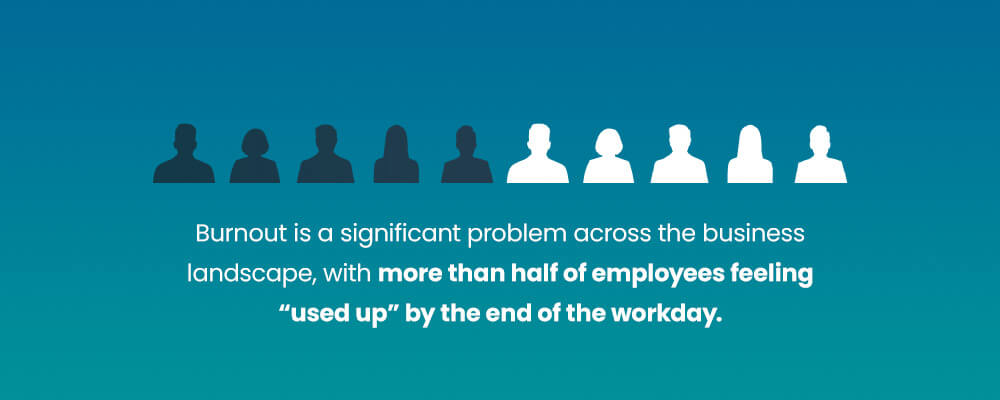When it comes to strategy reporting and management, traditional spreadsheet methods often take center stage. For many businesses, spreadsheets are familiar, appear flexible and offer a seemingly free method for documenting information. However, these manual processes can be strategy killers, inhibiting business growth, lowering trust and leading to misguided strategic decisions.
These processes can also be frustrating for everyone involved. Version control issues, collaboration nightmares and reporting cycle delays can increase confusion and complexity. Beyond these surface-level issues also lie significant, often unquantified, hidden costs that silently erode strategic effectiveness, hinder growth and impact the bottom line.
Thankfully, there is a solution. About 65% of organizations report better financial performance when leveraging more robust processes. This article will dissect and quantify the hidden costs of manual processes and highlight strategies to break the vicious cycle.
In This Article
- The Elephant in the Room: Why We Cling to Manual Methods
- Hidden Cost #1: The Insidious Time Cost — Your Most Valuable Asset Drained
- Hidden Cost #2: The Compounding Error Cost — When “Small” Mistakes Snowball
- Hidden Cost #3: The Elusive Opportunity Cost — What You’re Not Doing
- Breaking the Cycle: Reclaiming Value With a Strategy Execution Platform
The Elephant in the Room: Why We Cling to Manual Methods
Despite the plethora of advanced tools, artificial intelligence and automation readily available today, many businesses remain reliant on manual processes. For some organizations, cost considerations get in the way of new investments. Other businesses believe the transition to new tools would be too complex and time-consuming to justify. Some businesses are simply resistant to change, living by the saying, “If it’s not broke, don’t fix it.” Unfortunately, many manual processes are “broken” and result in inefficiencies and monetary losses across organizations.
On the surface, manual methods seem harmless. Using spreadsheets or keeping records with pen and paper can be a quick way to transfer information. For some people, traditional tracking can also provide a sense of familiarity and give an illusion of control and cost-effectiveness. Simply jotting down numbers on a spreadsheet is surely less costly than investing in new tools or software, right? Wrong. This perceived control is often an illusion that masks deeper inefficiencies.
Hidden Cost #1: The Insidious Time Cost — Your Most Valuable Asset Drained
The first hidden cost of manual tracking is lost time. Manual reporting processes can significantly bog down businesses and waste time and resources. Traditional reporting often requires workers to gather data from several sources, spend time organizing the information and create comprehensive and accurate reports.
Depending on the complexity of your business operations and the ease of information access, this process can take several hours each week. The longer your team members spend on these manual processes, the less time they can engage in critical activities that require creativity or problem-solving to contribute to strategic success.
The Core Problem
Manual data collection, data consolidation, formatting and report generation are massive time sinks. Beyond the simple act of pulling up a spreadsheet and logging information, your team likely encounters several timely roadblocks throughout these processes. Relying on manual reporting processes often requires team members to:
- Chase updates from different departments or individuals.
- Manually enter data into master spreadsheets.
- Reconcile inconsistencies across different sources.
- Format reports for leadership presentations.
- Correct errors that arise during manual processes.
While these activities may seem harmless, they add up to make a massive impact. Research suggests that more than half of managers spend about eight hours each week on manual tasks, which equates to a full workday. To understand how this could impact your bottom line, consider this example.

Imagine a team of five spending eight hours each week on these manual tasks. After a year, your team would have spent 416 hours on manual tasks. Multiply those hours by the average burdened salary rates for strategy professionals. This total reflects your team’s time cost for manual processes.
The Impact of Manual Reporting
So, how does lost time impact your bottom line? Well, time is money. Traditional tracking and reporting demand time and attention that your team could otherwise dedicate to meaningful business initiatives and activities. Losing time by adhering to manual tracking and reporting processes can result in:
- Reduced productivity for high-value strategic work: When employees are stuck compiling reports manually, they have less energy and time for strategic initiatives like product development, market research or long-term planning. Additionally, manual processes can become increasingly unsustainable as a business grows, causing a strategic drift in long-term success.
- Delayed decision-making due to slow reporting cycles: Manual reporting contributes to slow reporting cycles, which can delay decision-making. Collecting information manually takes time, and the more data sources a team must refer to, the longer these wait times can become. A lack of real-time visibility can make it challenging for a company to respond quickly to changing business or market conditions. Lags in manual reporting can also result in strategy leaders relying on outdated information to make decisions, potentially leading to suboptimal outcomes.
- Employee burnout and frustration: Burnout is a significant problem across the business landscape, with more than half of employees feeling “used up” by the end of the workday. Employees who face burnout are much less likely to go above and beyond at work and are more likely to experience negative impacts like irritability and exhaustion. Additionally, burnout can lead to lower-quality work, missed deadlines and other lackluster business outcomes. While several factors can contribute to employee burnout, manual, time-consuming and repetitive tasks can worsen the problem. Error-prone processes can increase worker frustration, enhance workplace stress and lower overall job satisfaction.

Hidden Cost #2: The Compounding Error Cost — When “Small” Mistakes Snowball
Strategic alignment relies on accurate information access. Accurate data empowers informed decision-making, improves resource allocation and enhances performance measurement. Unfortunately, manual processes lack real-time visibility and are subject to several common errors. Depending on when or if your team catches these errors, you can face immense financial losses and additional time sucks.
The Core Problem
Manual processes are inherently prone to human error, like typos, formula errors, copy-and-paste mistakes and outdated data usage. Here’s how “small” mistakes can have significant impacts:
- Data entry errors: Data errors are common in manual processes, with rates ranging between 2 and 2,784 errors per 10,000 fields within data processing methods. The impacts of these errors can vary greatly. A simple misplaced decimal can lead to incorrect budget allocation or performance assessment. Errors in financial data can distort cash flow statements, balance sheets and income statements, making it challenging to assess the true financial health of your business.
- Formula errors: Incorrect calculations can skew key performance indicators (KPIs) and strategic insights. Using an incorrect cell reference can lead to wildly inaccurate values and misleading trends. If you’re comparing your KPI benchmarks against industry trends or competitors, these formula errors can result in misleading comparisons that drive poor decision-making. Identifying the root cause of a poorly performing KPI can become even more challenging with inaccurate data.
- Version control issues: Many businesses relying on manual processes have multiple versions of the same report. For some teams, this is a strategy to protect against information loss, but for others, it may be unintentional. For example, two employees on your strategy team may have created the same document, not knowing another version was already available. Regardless, manual processes can result in version control issues. With multiple report copies floating around, each report can have inconsistencies. One version may not have been updated for several weeks, and another may have a data entry error. Another version may rely on incorrect formulas. The result is three reports with vastly different numbers, leading to confusion and uncertainty. Your team may make decisions from outdated information, miss a critical update or pursue an invalidated strategy based on inaccuracies.
The Impact of Human Error

Data quality is essential for ensuring productive business decisions, and manual errors often result in poor data quality. Studies show that poor data quality results in an estimated loss of $3.1 trillion annually in the United States. Time-consuming reconciliation can further harm your assets and does not guarantee data accuracy. Beyond increased frustration and time losses, these errors can lead to:
- Loss of trust in your data and reports: Errors can cause you, your team and your stakeholders to lose significant trust in your data and reports. Your stakeholders may be reluctant to act on reported data, and you may question the validity of all gathered information. Repeated errors can further strain stakeholder relationships and bring increased scrutiny to data processes, adding more time requirements to already time-consuming activities.
- Misguided strategic pivots or resource allocations: Acting on incorrect information can result in misguided strategic pivots and resource allocations. For example, say your team crafted a report highlighting sales for a particular product. You allocate resources to enhance marketing for this product to capitalize on the opportunity. However, the report contained a formula error, and the product you invested in was actually underperforming. In the end, you’ve dedicated resources to a lackluster initiative while neglecting high-potential products.
- Compliance risks: Errors can result in noncompliance, even if your business tries its best to adhere to regulations. Employees can misinterpret regulations, submit incomplete information or face delays in the reporting process that cause you to miss critical deadlines. Depending on your industry, operations and specific compliance risk, your business could face penalties, fines and reputational damage.
- Damaged credibility: Your business could damage its credibility by using inaccurate information. Misleading financial reports, compliance violations, inaccurate public statements and broken promises can result in lost trust. You may lose stakeholders, or customers may discontinue services. Negative word of mouth could limit your opportunities for new audiences.
Hidden Cost #3: The Elusive Opportunity Cost — What You’re Not Doing
The final killer of your organizational strategy is opportunity cost. What you’re not doing can be just as harmful to your business as a team’s mistakes. In a fast-paced business landscape, adapting to changes and identifying trends is paramount to business success. Unfortunately, manual processes often prevent teams from gathering this critical information timely, resulting in missed opportunities and stagnant growth.
The Core Problem
The time and mental energy that manual tracking consumes diverts resources from high-value, forward-looking strategic activities. Manual tracking and reporting take away from:
- Strategic analysis and foresight: Every minute your team spends gathering information and compiling reports manually is time not spent on deeper market analysis, competitor research, scenario planning or identifying emerging trends.
- Innovation and agility: Spending all your time iterating existing strategies prevents you from dedicating time to developing new initiatives or responding to market changes rapidly. While your competitors experiment with new ideas and technologies, your team is stagnant, making it harder to close gaps and attract new audiences.
- Proactive course correction: Delays in identifying underperforming initiatives mean you waste resources for longer periods and miss opportunities to pivot.
- Stakeholder engagement and alignment: It’s important to engage your stakeholders. Often, manual reporting only scratches the surface of opportunity. With limited accessibility, collaboration nightmares and delayed information cycles, manual reporting can negatively harm your relationships and contribute to misalignment.
The Impact of Lost Opportunities
By the time you assess insights from manual reporting processes, your competitors have likely seized the advantage, and markets may have shifted. This endless cycle of playing catch-up often results in:
- Lack of innovation and stagnation: Time constraints, misinformed budgets and limited collaboration from manual processes can promote business stagnation. Additionally, the more reliant your team becomes on manual processes, the more resistant to change they may be in the future.
- Slow responses to market shifts: Manual processes delay market shift identification. Relying on historical performance only, rather than leveraging real-time visibility, can lengthen decision-making processes, limit agility and fail to identify bottlenecks and solutions that could give you a competitive edge.
- Missed growth opportunities: Lacking innovation and neglecting rising trends can result in missed growth opportunities. As competitors offer new products or streamlined processes, your business can fall behind. Failing to capitalize on opportunities can make it harder to attract new customers and threaten your existing customer relationships.
- Strategic drifts due to a lack of proactive management: Limited data exploration and inflexible manual processes can make it challenging to identify the need for a strategic shift and implement new processes. Data silos can make it difficult to gain holistic views, and teams lacking accurate and timely information run the risk of making reactive, rather than proactive, decisions.
Breaking the Cycle: Reclaiming Value With a Strategy Execution Platform
It’s clear how manual tracking and reporting can hinder business growth. Lost time, human errors and missed opportunities can quickly ignite a downward spiral. These costs are often interconnected and can create a multiplicative negative effect.
To move from reactive, manual tracking, businesses need an automated strategy execution management solution. The right solution can centralize your information, creating a reliable source for all team members, leaders and stakeholders to access timely and accurate information when they need it.
With automated data collection and reporting, businesses can gain real-time visibility into market trends and business happenings to drive informed and effective decision-making. You can also streamline collaboration and boost accountability to improve plan execution.
Leverage automation to reduce errors for better decision-making and save time to reinvest in strategic work. Free your capacity to focus on growth opportunities and innovations.
The True Price of Inaction vs. the Investment in Strategic Analysis Clarity
Manual methods are not free. Traditional processes suck up your time and resources, creating an ongoing and costly choice that hinders success. If you’re ready to take control of your hidden costs and propel your business into a competitive landscape, consider an automated strategy execution platform. Explore a modern strategy execution software to unlock efficiency, accuracy and strategic agility. See how platforms like AchieveIt can help you quantify and eliminate hidden costs by requesting a demo.




